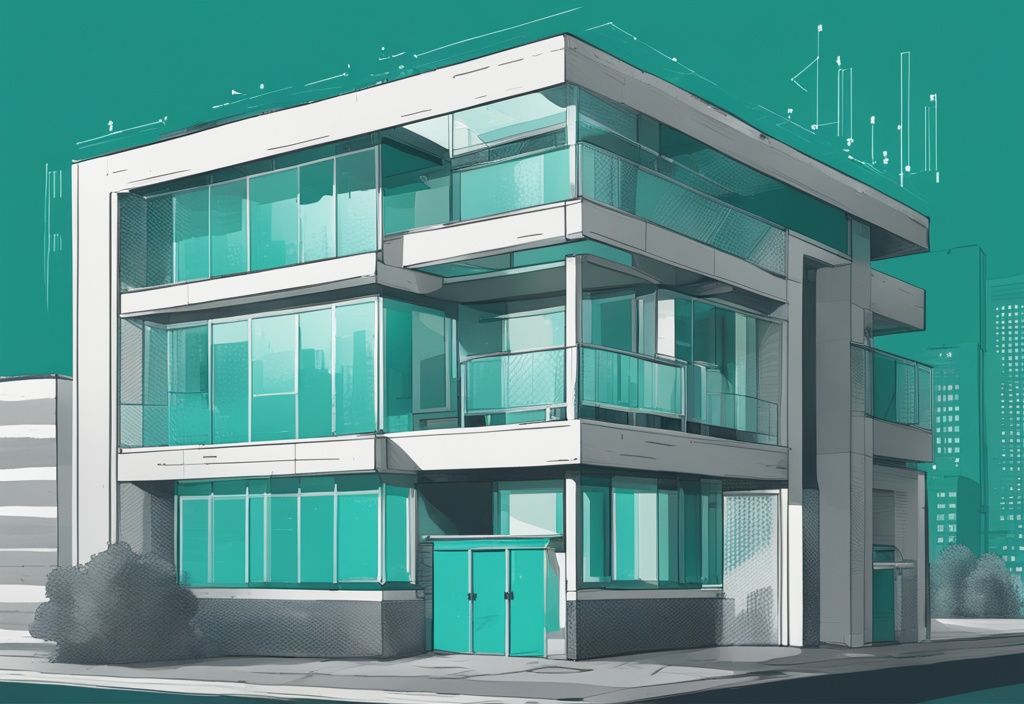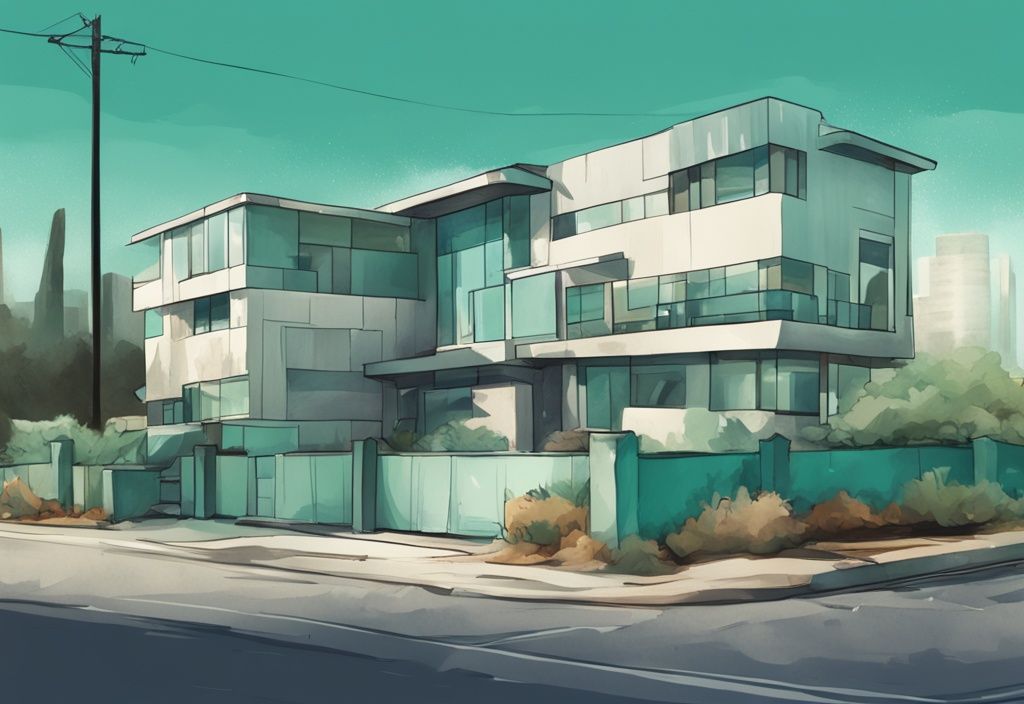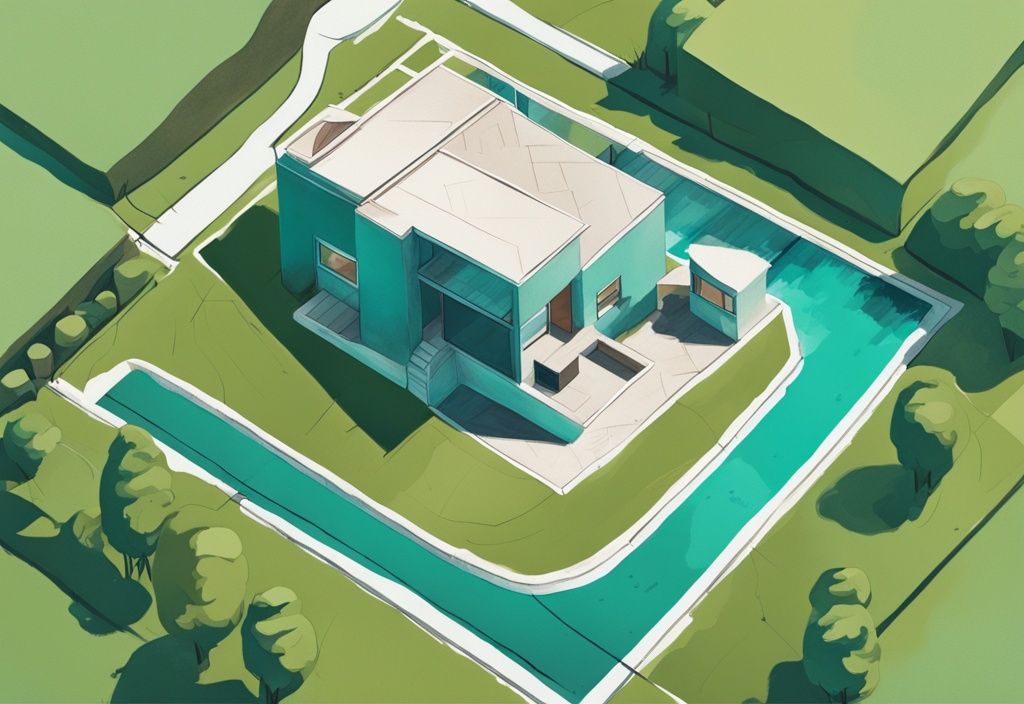Ever scratched your head wondering, “What is RSF in Real Estate?” You’re not alone. Navigating through the real estate jargon can often feel like trying to figure out a crossword puzzle when you’re missing half the clues, right? Well, that ends now. Understanding Rentable Square Footage (RSF) is like having the magic key to the property industry.
RSF isn’t just some boring term that property folks bandy about. It’s actually like a secret weapon that can give you an edge in both understanding property costs and negotiating better deals. Whether you’re leasing, buying, or investing, grasp RSF and you’ve just leveled up in the real estate game. Stick with me, and I’ll take you on a whirlwind tour of RSF.
Why not roll up your sleeves and join me on this journey of discovery? We’ll untangle RSF together – by the end, you’ll be able to whip out that term at your next cocktail party like a pro. Let’s dive in, shall we?
What Does RSF Mean in Real Estate?
When diving into the world of commercial real estate, it’s essential to grasp the concept of RSF (Rentable Square Footage). This section will walk you through what RSF entails and how it differs from USF (Usable Square Footage), helping you navigate your leasing decisions with confidence.
Defining Rentable Square Footage (RSF)
RSF, or Rentable Square Footage, is a term you’ll come across often. It represents the total space for which you’re charged rent. This includes not just the area you exclusively occupy—known as usable square footage (USF)—but also a share of the building’s common areas like lobbies, corridors, and restrooms. Think of it as renting your apartment but also paying for a slice of the hallway outside your door and a portion of the lobby downstairs. Understanding and calculating RSF accurately is crucial, especially when considering the difference between usable, rentable, and gross square feet, which is subtle but extremely important to understand when negotiating a lease. For more insights, check out this article on the differences in square footage types here. It helps in determining precise rental costs, negotiating lease terms effectively, and making sound investment decisions in the commercial real estate sector.
RSF vs Usable Square Footage (USF): Know the Difference
Now, let’s dig into the difference between RSF and USF. While RSF includes both the USF and a slice of the common areas, USF is solely the space that you occupy and use exclusively. This distinction is significant—tenants are billed based on RSF, not just USF. Imagine you’re in a multi-tenant building. The common area factors—those hallways, restrooms, and lobbies—tend to be higher, thus bumping up the RSF compared to if you were the only tenant on a single floor. Recognizing the difference between these two measurements can be a game-changer. It enables you to understand your rent obligations better, and it fosters transparent lease agreements.
Components and Calculation of RSF
Elements that Count Towards RSF
Rentable Square Footage (RSF) in commercial real estate is more than just the space a tenant directly uses. It includes various common areas that enhance the building’s functionality and appeal. These areas encompass lobbies, hallways, restrooms, fitness centers, conference rooms, and other shared spaces.
These elements are crucial to the RSF because they add value to the tenant’s experience, making the entire building more usable. Excluded from RSF are vertical penetrations like stairwells and elevator shafts. While these do impact the overall layout, they’re not directly included in the Common Area Factor but can influence the RSF calculations indirectly.
How to Calculate RSF: Formula & Examples
To get a clear understanding of what is RSF in real estate, it’s important to know how it’s calculated. The fundamental formula for RSF includes the tenant’s usable space, known as Usable Square Footage (USF), and the building’s Common Area Factor (CAF).
Here’s the typical formula:
RSF = USF * (1 + Common Area Factor). Let’s break this down with an example:
If a tenant occupies 10,000 square feet (USF), and the building has a Common Area Factor of 15%, then the RSF would be:
10,000 * 1.15 = 11,500 RSF. Understanding these calculations is crucial, especially if you’re also interested in knowing what STR means in real estate.
This means the tenant pays for 11,500 square feet. Now, if the rental rate is $20 per square foot, the annual base rent would be:
11,500 RSF * $20 psf = $230,000.
Understanding this calculation helps tenants fully comprehend their rental obligations and provides landlords with a fair and competitive way to set rental prices.
Common Area Factor and Its Impact on RSF
Common Area Factor (CAF) is a critical aspect of calculating Rentable Square Footage (RSF) in commercial real estate. Understanding how the shared areas of a building affect RSF is pivotal for making informed decisions.
An Overview of Common Area Factor
Common Area Factor refers to the percentage of a building’s shared spaces added to the Usable Square Footage (USF) to calculate the Rentable Square Footage (RSF). In commercial real estate, understanding what is RSF in real estate is crucial for both tenants and landlords. Typical Common Area Factors in multi-tenant buildings range from 12% to 20%, depending on the building’s design and shared amenities.
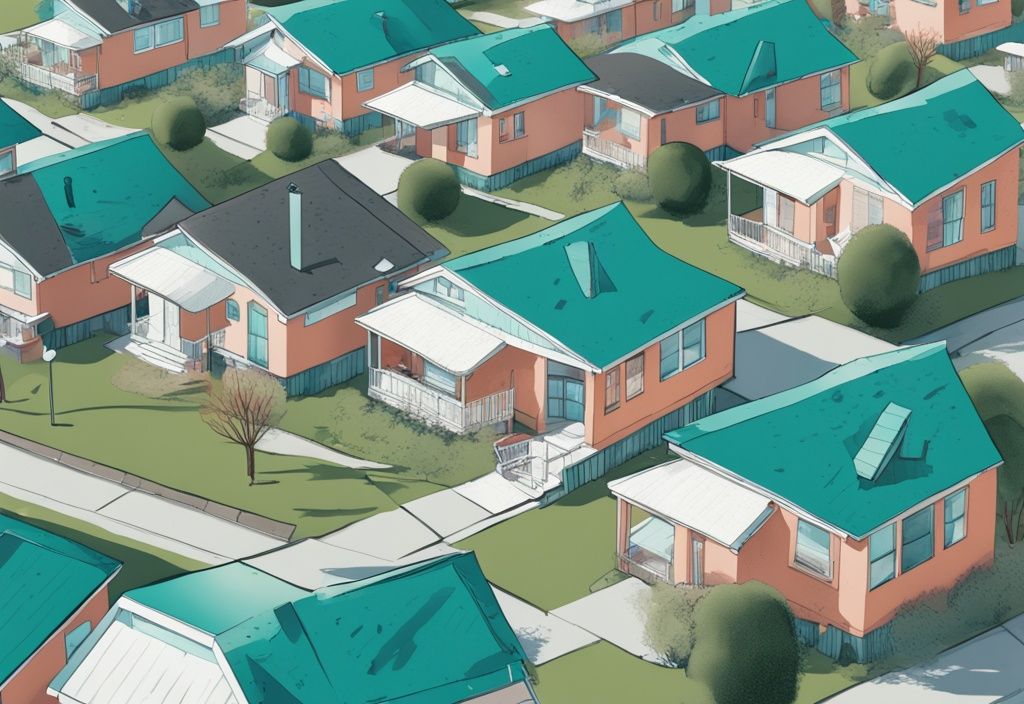
Market conditions and landlord discretion can sometimes influence Common Area Factor calculations. For instance, a building located in a high-demand area may have a higher Common Area Factor due to premium shared amenities like a rooftop deck or state-of-the-art fitness center. Some real estate associations are pushing for a uniform standard in RSF calculations to ensure consistency and fairness across the industry, making it even more imperative to understand what is RSF in real estate.
Common Area Factor’s Influence on RSF
A tenant’s share of common areas is calculated based on their pro-rata share of the floor they occupy. This means that each tenant’s RSF will include a portion of common areas like restrooms, hallways, and lobbies. Floors with multiple tenants usually have higher Common Area Factors, as more shared spaces are necessary.
Conversely, tenants occupying an entire floor may benefit from a lower Common Area Factor, as they share fewer spaces.
Differences in RSF calculations can vary significantly by building type and business sector. Office buildings, retail complexes, and industrial spaces may all have different Common Area Factors due to the nature and extent of shared amenities. For example, an office building with extensive conference facilities will have a different Common Area Factor than a warehouse with minimal common spaces.
Knowing what is RSF in real estate helps both landlords and tenants make better financial decisions, ensuring fair lease terms and optimized space utilization.
RSF and Its Significance in Real Estate Lease Agreements
Understanding what RSF is in real estate is crucial, as Rentable Square Footage (RSF) directly affects the rental rates and lease terms for commercial properties. RSF includes both the space a tenant exclusively uses, known as Usable Square Footage (USF), and a portion of the common areas shared with other tenants. This combined measurement ensures that tenants contribute fairly to the maintenance and use of the shared spaces, which typically include lobbies, restrooms, and conference rooms.
RSF’s Impact on Rental Costs
Because tenants are billed based on RSF rather than USF alone, the inclusion of common areas can increase overall rental costs. For example, in gross leases where all expenses are bundled into the lease rate, a higher RSF means a higher rental payment because it reflects more rentable space. Additionally, RSF can impact costs affiliated with utilities and maintenance fees, as these are often distributed based on RSF.
From a property owner’s perspective, a higher RSF may enhance the value of the property since it increases the quantity of rentable space. This can lead to greater revenue potential and a higher property valuation. For tenants, the key takeaway is that their rental obligations are based on RSF, not just the space they physically occupy.
The Role of RSF in Lease Negotiations
Knowing what RSF is in real estate is indispensable during lease negotiations. Accurate calculation of RSF aids both tenants and landlords in conducting a thorough financial analysis, budgeting, and accurate property valuation. For tenants, having precise RSF information ensures they can compare different properties effectively, making better leasing decisions based on fair rental costs. For instance, understanding how RSF is calculated can help tenants determine whether a property is overpriced or in line with market standards.
For landlords, accurate RSF calculation is crucial for setting appropriate lease terms and highlighting the financial benefits of their property. The exact RSF helps in determining competitive rent prices, attracting desirable tenants, and forecasting revenue. Both parties benefit from a transparent understanding of RSF as it prevents misunderstandings and disputes over space allocation and associated costs.
Ultimately, understanding RSF allows for smoother lease negotiations. Tenants can advocate for better lease terms based on a clear comprehension of their rentable area, while landlords can emphasize the value of their properties by precisely accounting for all rentable spaces. Accurate RSF calculations lead to fair and mutually beneficial lease agreements, essential for long-term tenant satisfaction and landlord profitability.
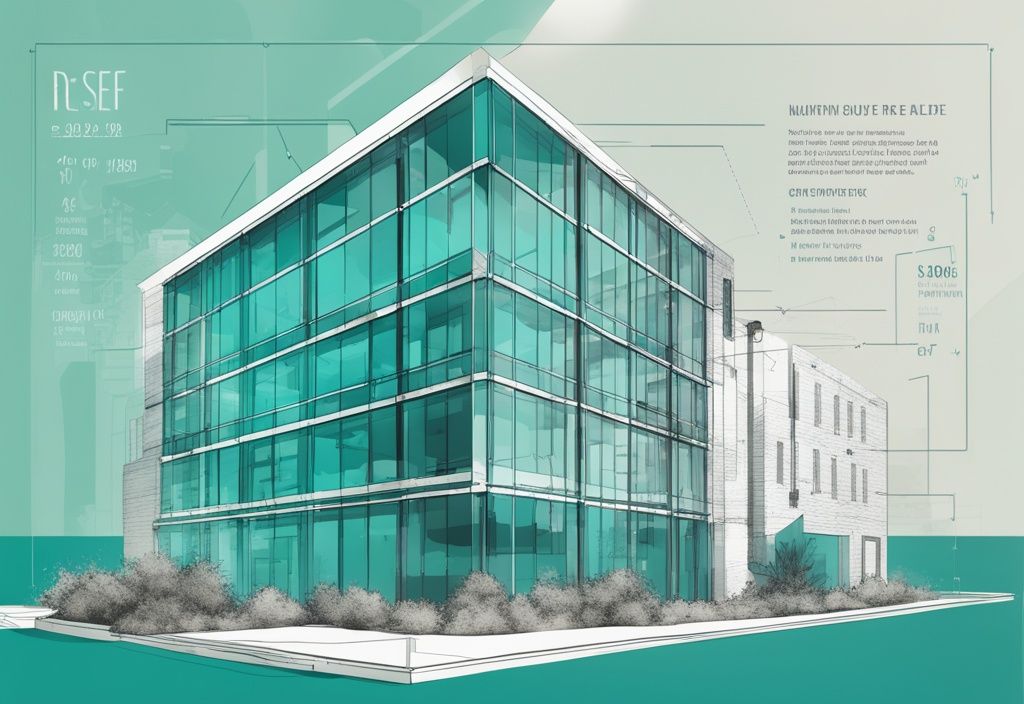
Perks of Accurate RSF Calculation for Tenants and Landlords
Benefits for Real Estate Tenants
Accurate Rentable Square Footage (RSF) calculations offer significant advantages for real estate tenants. Knowing the precise RSF is like having a reliable compass that guides tenants in comparing properties accurately. This helps make informed decisions and ensures they find the perfect space that suits their needs.
Understanding what is RSF in real estate plays a crucial role in determining fair rental costs. RSF covers not only the usable square footage (USF) but also a share of common areas. This comprehensive measurement prevents overpaying for space, offering transparency in rent calculations. Clear cost understanding aids in better financial planning and budget management.
Efficient space management is another major perk. Accurate RSF assists in optimal allocation of exclusive and shared areas, promoting effective utilization. Tenants can plan their layout and operations more proficiently, maximizing the value derived from the rented space. RSF data helps tenants use their space efficiently, balancing operational needs and costs.
Advantages for Property Landlords
For property landlords, accurate RSF calculations bring various benefits essential for effective property management and leasing. One primary advantage is identifying potential revenue streams accurately. Knowing what is RSF in real estate allows landlords to calculate the total rentable area, including common areas, thus maximizing income potential through correct rent assessments.
RSF also helps landlords establish competitive rent prices. With accurate calculations, rent set reflects the exact lease value, attracting and retaining tenants. This transparency aligns with market standards and tenant expectations, offering a fair rental rate.
Preventing disputes over space and rent is another significant benefit. Clear and precise RSF figures provide a common ground, reducing conflicts related to space measurements and associated costs. This clarity fosters a trustworthy relationship, essential for long-term leasing arrangements.
Efficient use of RSF can serve as a potent marketing tool. Properties with well-managed layouts and clearly defined RSF are more appealing to potential tenants. Accurate RSF enhances the property’s marketability, showcasing transparency and professionalism, driving higher occupancy rates.
RSF Variations across Different Building Types
When exploring what is RSF in real estate, it’s essential to consider the different building types and how they impact RSF values. This understanding helps both tenants and landlords to make better, more informed decisions about occupancy costs.
Influence of Building Type on RSF
Grasping what is RSF in real estate becomes even more vital when evaluating how building types influence RSF figures. For example, high-rise office buildings usually feature a lot of communal spaces like multiple elevators, expansive lobbies, and shared conference rooms. These extensive common areas lead to a higher Common Area Factor (CAF), thus boosting the RSF.
On the flip side, industrial warehouses or single-tenant buildings generally have fewer shared amenities, bringing about a lower CAF. Understanding industry standards specific to different building types is key in accurately assessing RSF. Whether it’s retail, office, or mixed-use spaces, knowing these metrics ensures both landlords and tenants can make well-informed decisions reflecting true occupancy costs.
Impact of Building Amenities on RSF
When top-tier amenities are present, it influences what is RSF in real estate significantly.
Buildings equipped with features like fitness centers, large conference rooms, and upscale lobbies inherently have higher RSF values. While these amenities add great value and functionality, they also increase the CAF, leading to escalated rental and occupancy costs.
Landlords typically adjust the RSF by reflecting the premium value of such amenities in the CAF. Understanding what constitutes a material fact in real estate can help tenants make more informed decisions.
This might mean tenants pay more, but they also benefit from fantastic facilities that can boost employee morale and impress clients. Balancing the trade-offs between higher rent and the added value of top-notch amenities is essential for tenants. Meanwhile, landlords can effectively use this strategy to market their properties.
FAQ About RSF in Real Estate
Understanding RSF (Rentable Square Footage) is crucial for anyone navigating the real estate market, whether you’re a tenant looking to lease office space or an investor evaluating properties. Below, you’ll find answers to some of the most common questions about RSF in real estate, explained in a way that’s easy to grasp and apply to your own situation.
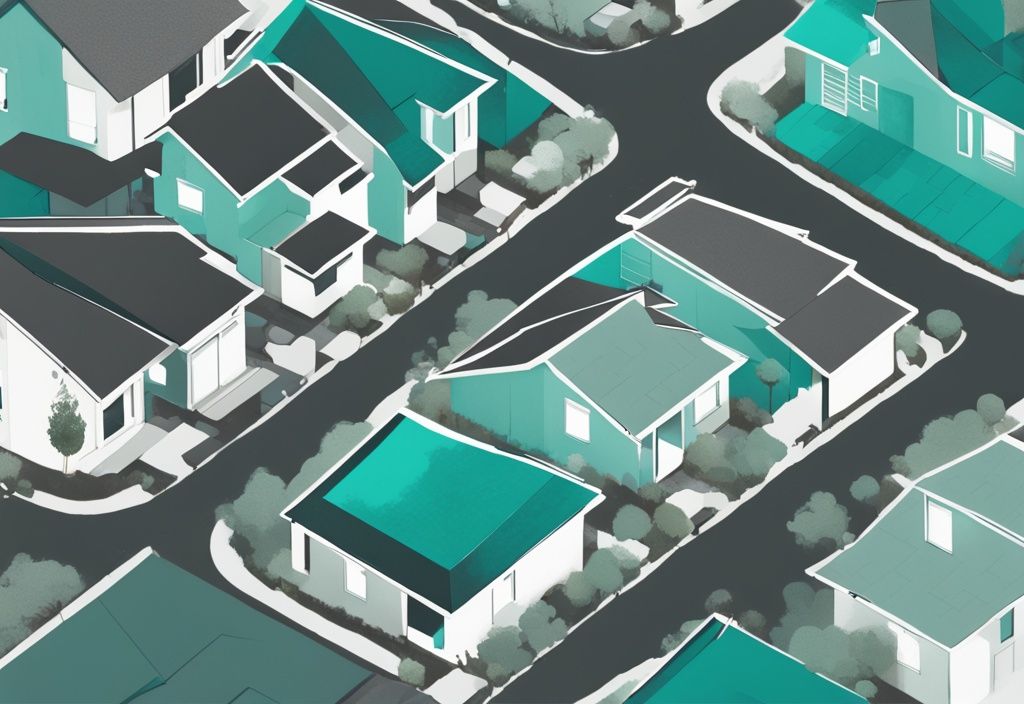
How does RSF differ from USF?
RSF (Rentable Square Footage) includes the USF (Usable Square Footage) along with a share of the common areas in a building. Think of USF as the space you exclusively occupy and use, like your office or shop. RSF, on the other hand, takes into account those shared hallways, lobbies, and restrooms, influencing how much rent you’ll pay. So, if your office measures 1,000 USF, the RSF might be 1,200 once the communal areas are added in.
What impact does Common Area Factor have on RSF?
The Common Area Factor (CAF) plays a pivotal role in shaping your RSF. It determines how much of the shared spaces are added to your USF to arrive at the RSF. Essentially, it’s a multiplier affecting total rent costs, as the more common areas like gyms or lounges a building has, the higher your RSF — and in turn, your rent — will be. For instance, a building with a CAF of 1.2 means 20% of the common areas are tacked onto your USF.
Why should tenants pay attention to RSF?
Paying attention to RSF can make a big difference in your rent and how effectively you use your space. Knowing your RSF helps in evaluating if you’re getting good value for your money and whether you can utilize the space efficiently. It’s like knowing the full price before buying something, so you’re not caught off guard. By understanding RSF, you’re in a better position to negotiate rent and manage your space smartly.
How can RSF values differ between buildings?
RSF values can vary significantly from one building to another. These differences stem from the type and size of communal areas and amenities each building offers. For example, a high-rise with a rooftop terrace, several meeting rooms, and a large lobby will have a higher RSF compared to a straightforward office block with minimal shared space. The more amenities, the more the common areas, thus bumping up the RSF value.
How to calculate rent based on RSF?
Calculating rent using RSF is straightforward. You simply multiply the RSF by the per square foot (psf) rental rate. Let’s say you’re considering a space with 11,500 RSF at a rate of $20 psf. Your annual rent would be 11,500 x 20, which equals $230,000. It’s an easy way to budget and compare different properties.
What details about RSF should I look for in my lease agreement?
When reviewing your lease agreement, it’s vital to look for specifics around the RSF and USF, the Common Area Factor applied, and any included amenities. Confirm how the RSF is calculated to avoid any confusion or disputes later. This clarity ensures you’re fully aware of what you’re paying for and helps in making well-informed decisions.
Summary: The Importance of Understanding RSF in Real Estate
Understanding what RSF means in real estate is crucial for anyone involved in leasing or investing in commercial properties. Rentable Square Footage (RSF) encompasses both the space that a tenant exclusively occupies, known as Usable Square Footage (USF), and a share of the building’s common areas such as lobbies, hallways, and restrooms. This comprehensive approach provides a more accurate basis for rent calculations and financial assessments.
One of the most significant aspects of RSF is its direct impact on rental costs and space management. Since rent is calculated based on RSF, tenants and landlords need to have a clear understanding of both the USF and the Common Area Factor that influences the RSF. The Common Area Factor can vary widely depending on the building type and the amenities it offers, making it imperative to know exactly what you are paying for.
Accurate RSF knowledge benefits both tenants and landlords by ensuring transparency and fairness in lease agreements. For tenants, this means paying a fair price for the space they occupy plus their share of common areas, thus avoiding overcharges. For landlords, accurate RSF calculations can prevent disputes and help in setting competitive rent prices. Additionally, understanding RSF is crucial for making informed investment decisions and conducting precise financial analysis.
Misunderstanding or miscalculating RSF can lead to significant issues such as disputes over space and rent, which could hurt the reputation and financial performance of a property. On the flip side, well-managed RSF calculations enhance the marketability and overall value of the property.
Therefore, familiarizing oneself with what RSF means in real estate, how it’s calculated, and its implications can create a harmonious relationship between tenants and landlords, ensuring that both parties engage in beneficial lease terms and financial planning.
—
Understanding what RSF means in real estate could be a game-changer for anyone diving into commercial leases or investments.
Let’s imagine you’re a tenant eyeing a swanky office space. What you’re paying for isn’t just the area within the four walls of your new office but also a slice of the common spaces—like those elegant lobbies and handy restrooms. That’s your Rentable Square Footage (RSF) and trust me, it’s more important than you might think.
Knowing your RSF can make or break your rental costs. Since your rent is based on RSF, you’ll need to get a grip on both the Usable Square Footage (USF) and this thing called the Common Area Factor. This factor can vary like crazy depending on the type of building and its amenities. So, you’ll want to be crystal clear about what you’re paying for.
Think of it this way: accurate RSF knowledge equals transparency and fairness. If you’re a tenant, this means shelling out a fair price for your office plus your share of common areas, dodging those nasty overcharges. For landlords, getting those RSF calculations spot on can ward off disputes and help in setting competitive rent prices. Not to mention, it’s a lifesaver for investment decisions and financial analysis.
Now, let’s flip the coin. Mixing up or miscalculating RSF can spell trouble—think disputes over space and rent, damaging both reputation and wallet. On the bright side, nail those RSF calculations, and you’ve got a recipe for enhancing your property’s marketability and overall value.
So, really getting what RSF means in real estate, how it’s calculated, and its eventual impact can forge a peaceful coexistence between tenants and landlords. It ensures everyone is on the same page with lease terms and financial planning.
Hi, I’m Alex Harper, a real estate expert with over ten years of experience in property management and legal advice. My passion is making the often complicated world of real estate understandable. I share practical tips and simple solutions to help you make better decisions – whether you’re buying a home, renting or just want to learn more about the industry. With my knowledge and experience, I want you to feel well-informed and confident in your real estate projects. Let’s tackle this together!
